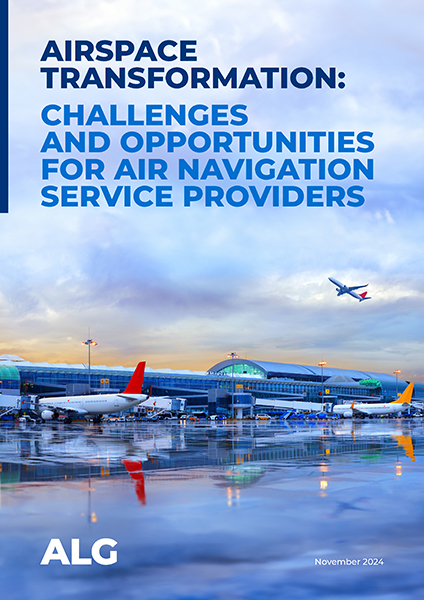In-depth insights

Airspace transformation: challenges and opportunities for Air Navigation Service Providers
The aviation world is undergoing a profound transformation across all levels of flight, from the lower layers to the highest reaches of airspace. The introduction of new technologies and modalities, such as drone swarms, advanced air mobility, and the increase in supersonic and stratospheric flights, is intensifying air traffic like never before.
This revolution addresses not only the demand for greater connectivity and transportation but also the need to redefine airspace organization and safety. In this context, air navigation service providers (ANSPs) face an urgent need to modernize and adapt to ensure safe, efficient, and high-quality services.
This publication explores the new challenges for airspace brought about by the growing diversification of flight types and the introduction of new actors, such as drones and autonomous transport vehicles, which create unprecedented demand in lower airspace. At the same time, upper airspace is increasingly used for supersonic flights and rocket launches transporting satellites into low orbit. This added complexity is driving the need to implement advanced management and control systems to coordinate an ever-growing flow of aircraft.
We analyze why ANSPs must transform into corporatized organizations with greater operational and financial autonomy. The experience of other countries shows that when air navigation services are managed as autonomous entities, their efficiency and ability to respond to growing demand improve significantly.
This paper emphasizes the importance of adopting advanced technology to address the challenges of modern airspace. We detail the role that artificial intelligence and hyperconnected control systems play in achieving safe navigation and management in an increasingly congested air environment.
Additionally, we highlight the need for an agile regulatory framework that facilitates private sector involvement, thereby ensuring an up-to-date and sustainable air infrastructure prepared to support the growing demand and complexity of contemporary aviation.
